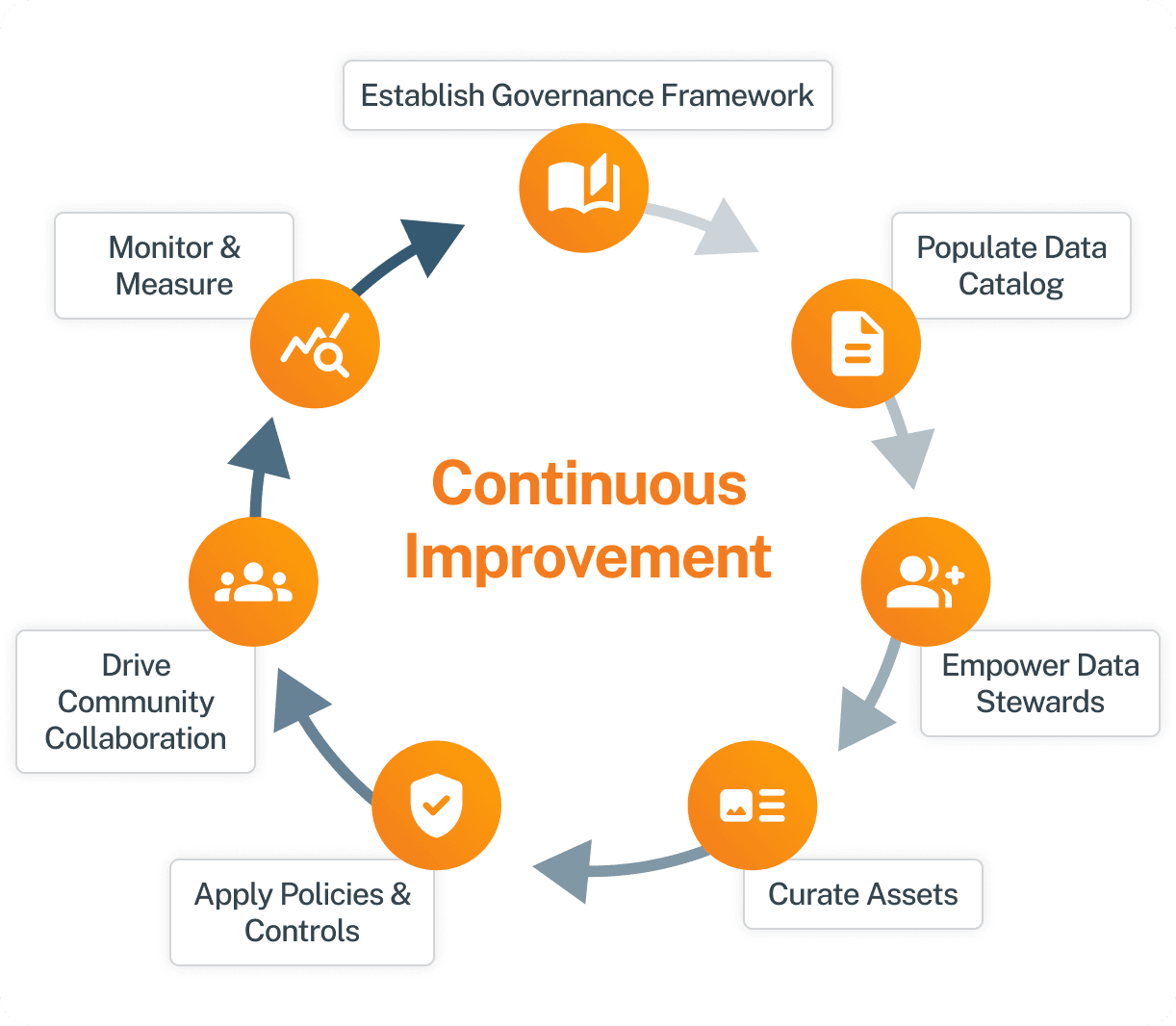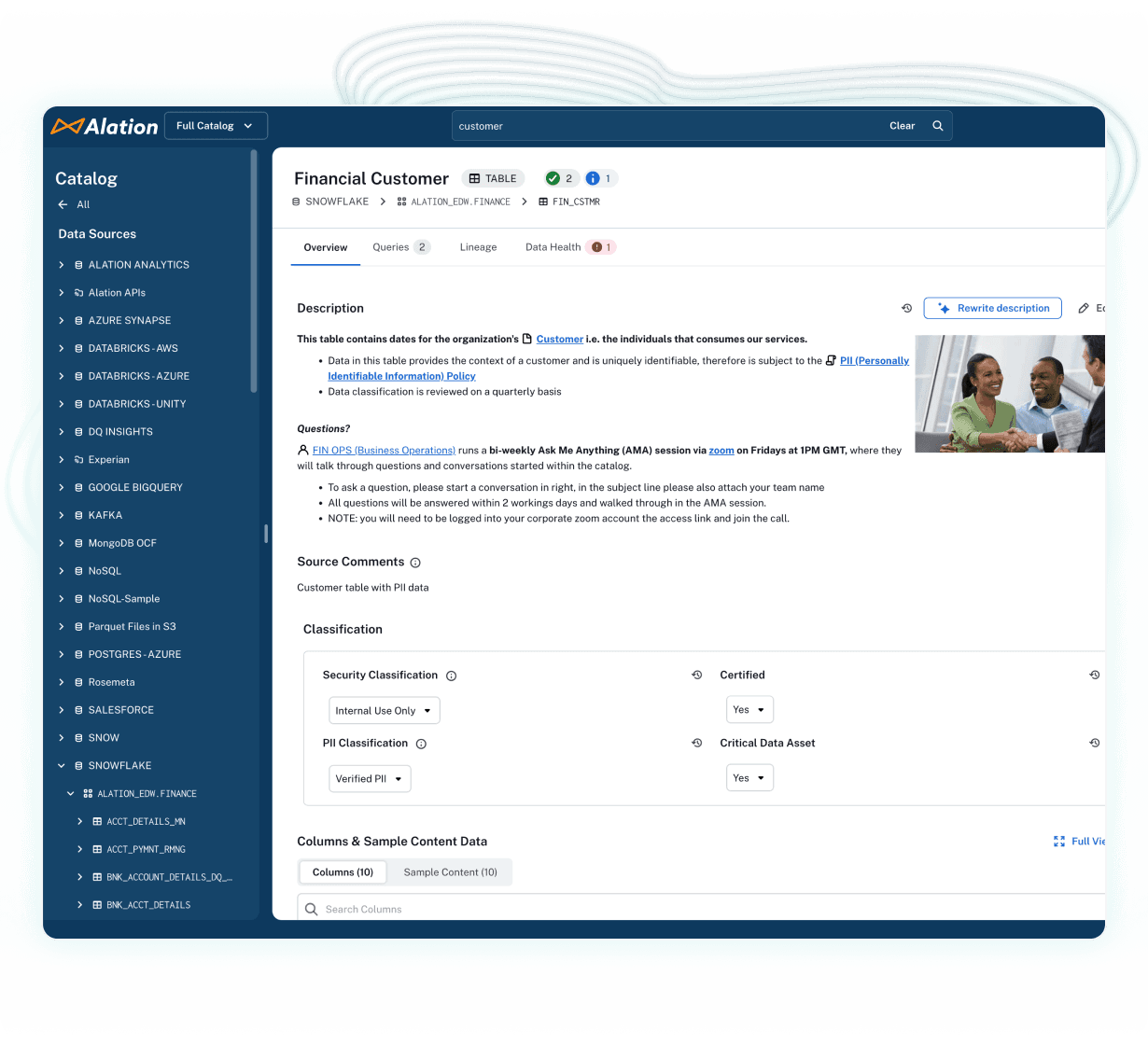
Start with your vision
Set a clear vision for data governance program that links to your business goals. A short, practical plan helps every team know why data matters, how to protect it, and how to use it with confidence.
Embrace what is important
Focus on the data that matters most. Add high-value tables and reports to your data catalog, link them to key business goals, and make sure everyone can find and understand them. Build a partnership where the vision safely unlocks the potential of your organization's data for everyone.
Empower data stewards
Recognize and support your data stewards. Let Alation automate tedious, manual work like classification, policy tags, data lineage, and other tasks. Free your stewards up to spend more time improving data quality, not chasing spreadsheets.
Create knowledge blocks
Take steps to construct your vision one block at a time. Add descriptions to data assets, create business glossaries for key terms and metrics, and set up strong data policies. Each block adds context so any user can understand how to use data appropriately.

Congrats!
Complete these steps, and you’ll have easy data for users to find and understand—closing the loop of active governance.
Next, it's time to build trust!
Implement policies
Clear data governance policies boost the impact of your organization’s data flows and metadata management. They support compliance, smarter data use, and scalability. When users can see these policies before using data, they know how to handle it the right way.
Drive collaboration
Help teams see the value of having data they can find, understand, and use with confidence. Alation’s collaborative features make it easy to start conversations about data and policies and to promote trusted data use across your organization.
Monitor and measure
Monitor progress to see how your vision is taking shape. Show key stakeholders how you’re improving policy conformance and removing the fear of audits. Take the time to celebrate your successes and spot areas where your governance workflows need improvement.
Ready to start?
Now that you know the steps, it’s time to build your governance program.
